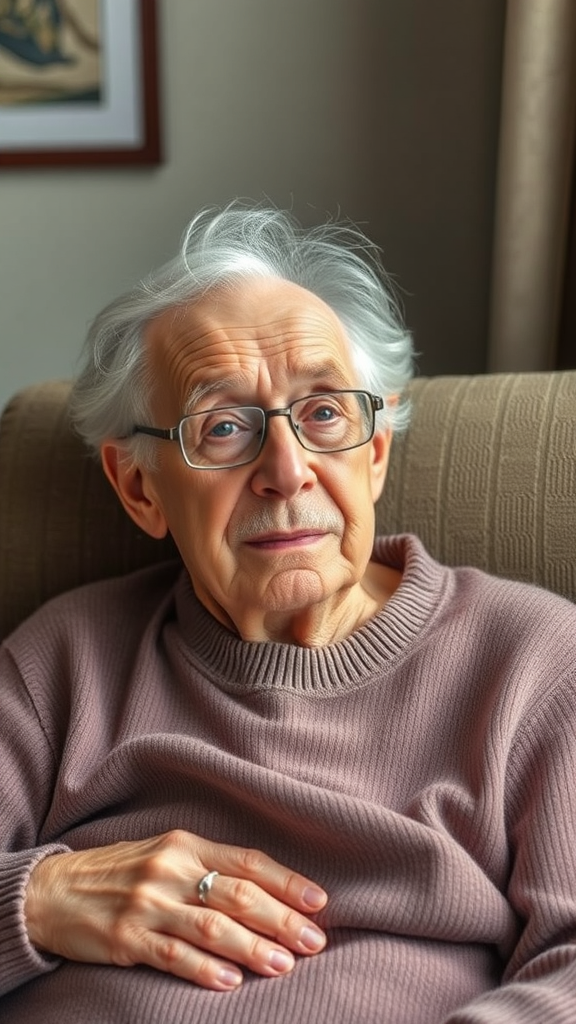The Best Fluffy Pancakes recipe you will fall in love with. Full of tips and tricks to help you make the best pancakes.

At What Age Do Seniors Start Slowing Down
At What Age Do Seniors Start Slowing Down: Understanding the Signs and Factors Involved
As individuals age, it’s common to notice changes in energy levels and physical capabilities. But at what age do seniors start slowing down? While every person is unique, many seniors may begin to experience noticeable changes in their speed and stamina around their mid to late 60s. Understanding the signs and factors involved can help you support the seniors in your life or prepare for your own aging journey.
Several factors contribute to the aging process and the physical slowdown that often accompanies it. For instance, biological changes, lifestyle choices, and medical conditions all play a role in how seniors experience aging.
Biologically, muscle mass naturally decreases over time, which can result in decreased strength and resilience. Here are some common indicators that may suggest a senior is beginning to slow down:
Getting older is a natural part of life Get your Age Slower
eBooks Here
- Reduced Energy Levels: Many seniors report feeling more fatigued after day-to-day activities that once felt routine.
- Slow Recovery: After physical exertion, seniors may take longer to bounce back compared to their younger years.
- Decreased Mobility: Seniors might notice they don’t move around as easily as they used to, experiencing stiffness or discomfort in their joints.
- Changes in Balance: Alterations in balance can lead to a greater risk of falls, making seniors hesitant to engage in physical activities.
- Less Desire to Participate: Reduced enthusiasm for social events or hobbies may also indicate that a senior is beginning to slow down.
Understanding the science behind aging provides context for these changes. The body’s metabolism tends to slow down with age, which can result in less energy and stamina. This decreased metabolism often leads seniors to take fewer calories or engage in less physical activity, which can, in turn, contribute to further slowing.
Health conditions can also affect when and how seniors slow down. Chronic illnesses such as arthritis, heart disease, or diabetes frequently correlate with reduced physical activity and energy levels. Here’s how these conditions can impact the aging process:
Getting older is a natural part of life Get your Age Slower
eBooks Here
- Arthritis: This painful joint condition can severely limit mobility, leading seniors to reduce their activity levels.
- Cardiovascular Health: Heart conditions can affect endurance and overall physical capability.
- Diabetes: Fluctuating blood sugar levels can cause fatigue and disinterest in physical activities.
Despite these challenges, it’s essential to remember that aging doesn’t have to mean complete slowing down. There are positive steps that seniors can take to maintain their activity levels and health.
Here are several strategies that can help seniors stay active and engaged:
Getting older is a natural part of life Get your Age Slower
eBooks Here
- Regular Exercise: Gentle activities like walking, swimming, or yoga can enhance fitness without overexerting.
- Healthy Eating: A balanced diet rich in fruits, vegetables, whole grains, and lean proteins helps maintain energy levels.
- Social Engagement: Staying connected with family and friends improves mental health and encourages physical activity.
- Regular Health Checkups: Routine medical visits can help manage chronic conditions effectively and improve quality of life.
It’s crucial for seniors to listen to their bodies. While some slowing down is normal, it’s important to differentiate between typical aging changes and signs that warrant medical attention. If you or a senior loved one experiences significant changes in mobility or energy levels, consulting a healthcare professional can provide clarity and guidance.
Seniors often begin to notice changes in their energy and activity levels around their mid to late 60s. While this can be concerning, understanding the factors involved and taking proactive steps can make a significant difference. By incorporating regular exercise, healthy eating, and strong social connections, seniors can savor their golden years with vitality and joy. Remember, aging is a journey, and every individual’s experience is unique.
Strategies for Staying Active: How Seniors Can Maintain Wellness and Energy Levels
As we age, staying active becomes increasingly important for maintaining wellness and energy levels. For seniors, engaging in regular physical activity can bring numerous benefits, such as improved strength, flexibility, and mental well-being. Understanding how to maintain an active lifestyle is crucial, and there are several strategies seniors can adopt to stay engaged and healthy.
Getting older is a natural part of life Get your Age Slower
eBooks Here
To begin, it’s essential to find activities that are enjoyable. When exercise feels like a chore, motivation tends to slip. Here are some enjoyable ways to maintain physical activity:
- Walking: Simple and effective, walking is a great way to get outdoors, enjoy nature, and connect with the community.
- Swimming: Water provides a gentle resistance that works the muscles without straining the joints.
- Dance: Join a dance class or simply play music at home. Dancing is both fun and a great way to socialize.
- Gardening: Gardening combines physical activity with the joy of nurturing plants, providing both exercise and mental peace.
- Chair exercises: For those with limited mobility, chair exercises can be an excellent way to stay active safely.
Strength training into the weekly routine is equally beneficial. Even light weights can help build muscle and improve bone density. Here’s how you can approach strength training:
Getting older is a natural part of life Get your Age Slower
eBooks Here
- Use resistance bands: These are affordable and versatile tools that can enhance strength without requiring heavy weights.
- Body-weight exercises: Movements like squats, push-ups, or wall sits can also help strengthen different muscle groups without equipment.
- Resistance machines: If you have access to a gym, machines provide a safe way to train under supervision.
Flexibility and balance are also vital components of overall wellness. As we age, our muscles and joints can become stiffer, increasing the risk of falls. Here’s how to improve flexibility and balance:
- Yoga: Many communities offer gentle yoga classes designed for seniors. This improves flexibility, balance, and can help reduce stress.
- Tai Chi: This ancient Chinese martial art focuses on slow, controlled movements and is excellent for balance.
- Stretching: Simple daily stretches can really help with overall mobility and help keep injuries at bay.
Staying active isn’t just about physical exercises; it also encompasses social activities. Engaging with others provides motivation to stay active. Joining groups or clubs can foster connections and encourage regular exercise. Surrounding yourself with like-minded individuals can make any activity more enjoyable.
Getting older is a natural part of life Get your Age Slower
eBooks Here
Nutrition plays a significant role alongside physical activity when it comes to maintaining energy levels. A balanced diet rich in fruits, vegetables, whole grains, and lean proteins supports an active lifestyle. Here are some tips to enhance your nutrition:
- Stay hydrated: Drinking enough water is important, especially when engaging in physical activity.
- Balance your plate: Aim for a mix of macronutrients—carbohydrates, protein, and fats.
- Limit processed foods: Prioritize whole foods that nourish the body and provide sustained energy.
Setting realistic goals allows seniors to measure their progress and stay motivated. Start small, whether it’s taking short walks or participating in a local class, and gradually build up the commitment. This feeling of accomplishment can keep you inspired to continue your wellness journey.
Getting older is a natural part of life Get your Age Slower
eBooks Here
Remember, every little bit counts. Maintaining an active lifestyle contributes to better health, enhances your mood, and increases energy levels. By finding enjoyable activities, focusing on nutrition, and setting achievable goals, you can effectively navigate the aging process while thriving.
Ultimately, the key is to listen to your body and respect its limits. Engaging in activities you love will not only keep you physically active but can foster a sense of belonging and purpose as well. Staying active and healthy in your senior years is fully achievable!
Conclusion
Understanding at what age seniors start slowing down is crucial for both individuals and their families. While many seniors may begin to notice changes around their late 60s to early 70s, it’s essential to recognize that these alterations can vary widely based on numerous factors, including health, lifestyle, and genetics. The signs of slowing down can manifest differently, ranging from decreased physical agility to changes in cognitive function. Being aware of these signs is the first step toward maintaining vitality in later years.
Getting older is a natural part of life Get your Age Slower
eBooks Here
However, age doesn’t have to define your energy levels or overall wellness. There are numerous strategies that seniors can adopt to stay active and engaged. Regular physical activity, whether through walking, swimming, or practicing yoga, can significantly enhance strength, flexibility, and balance. Mental exercises, like puzzles or reading, also play a role in keeping the mind sharp. Moreover, social engagement through clubs, classes, or volunteering helps combat feelings of isolation that can sometimes accompany aging.
By focusing on maintaining an active lifestyle and mental well-being, seniors can counteract some of the natural slow-down that comes with age. It’s not just about adding years to life; it’s about adding life to years. Embracing wellness strategies not only fosters better health but also enriches the quality of life, allowing seniors to thrive well into their golden years. With the right mindset and dedication, it’s possible to age gracefully while staying vibrant.

